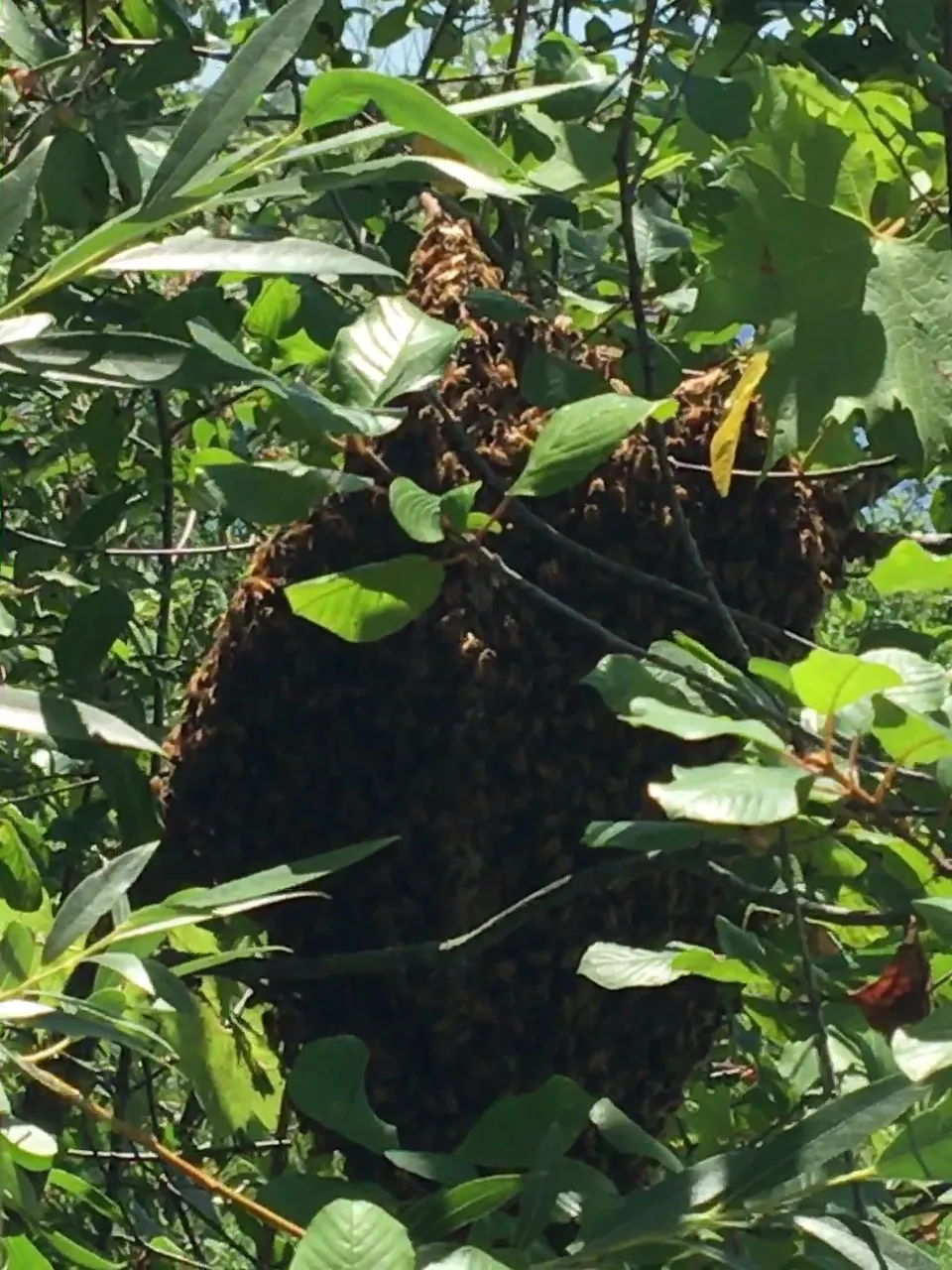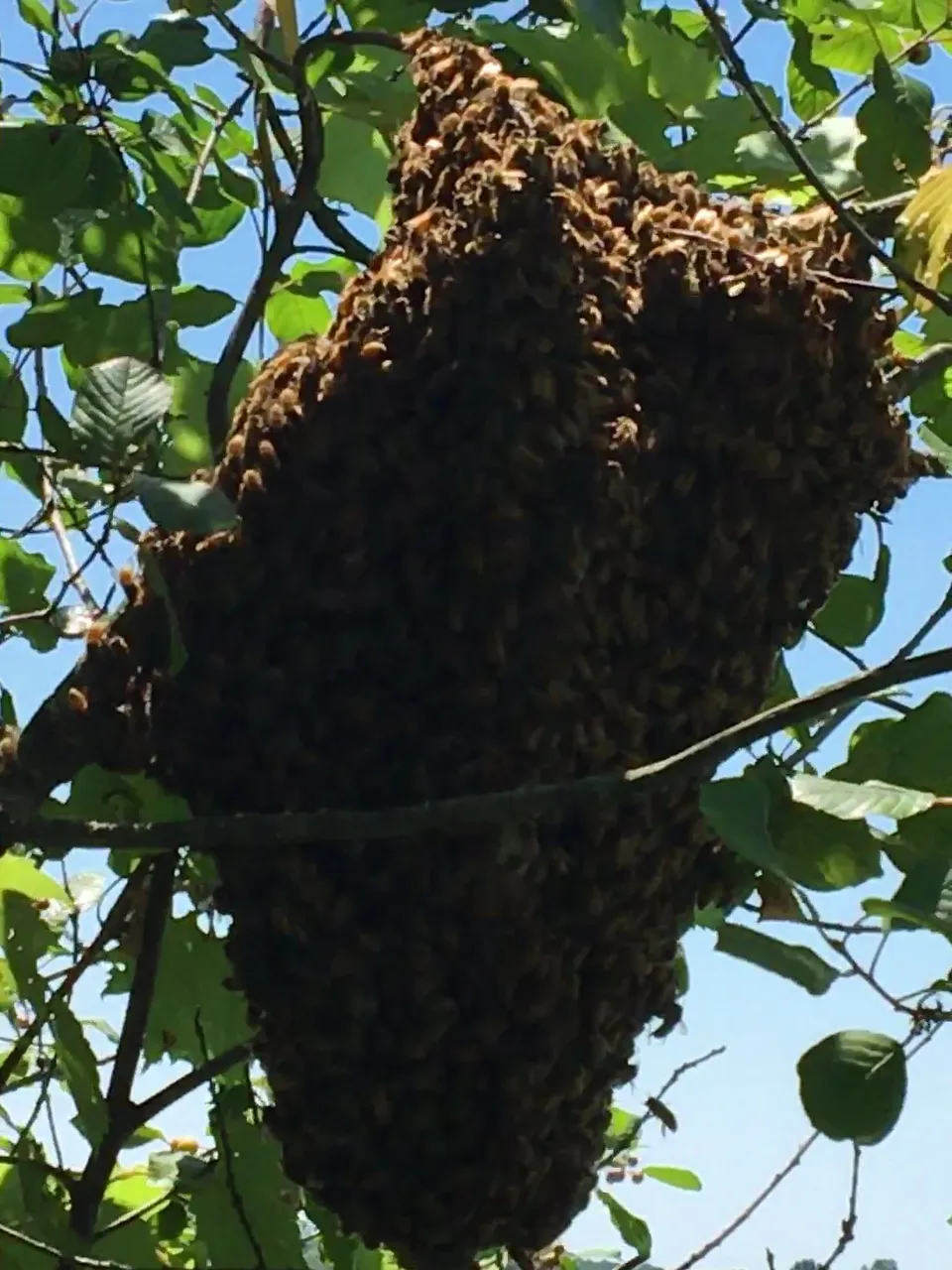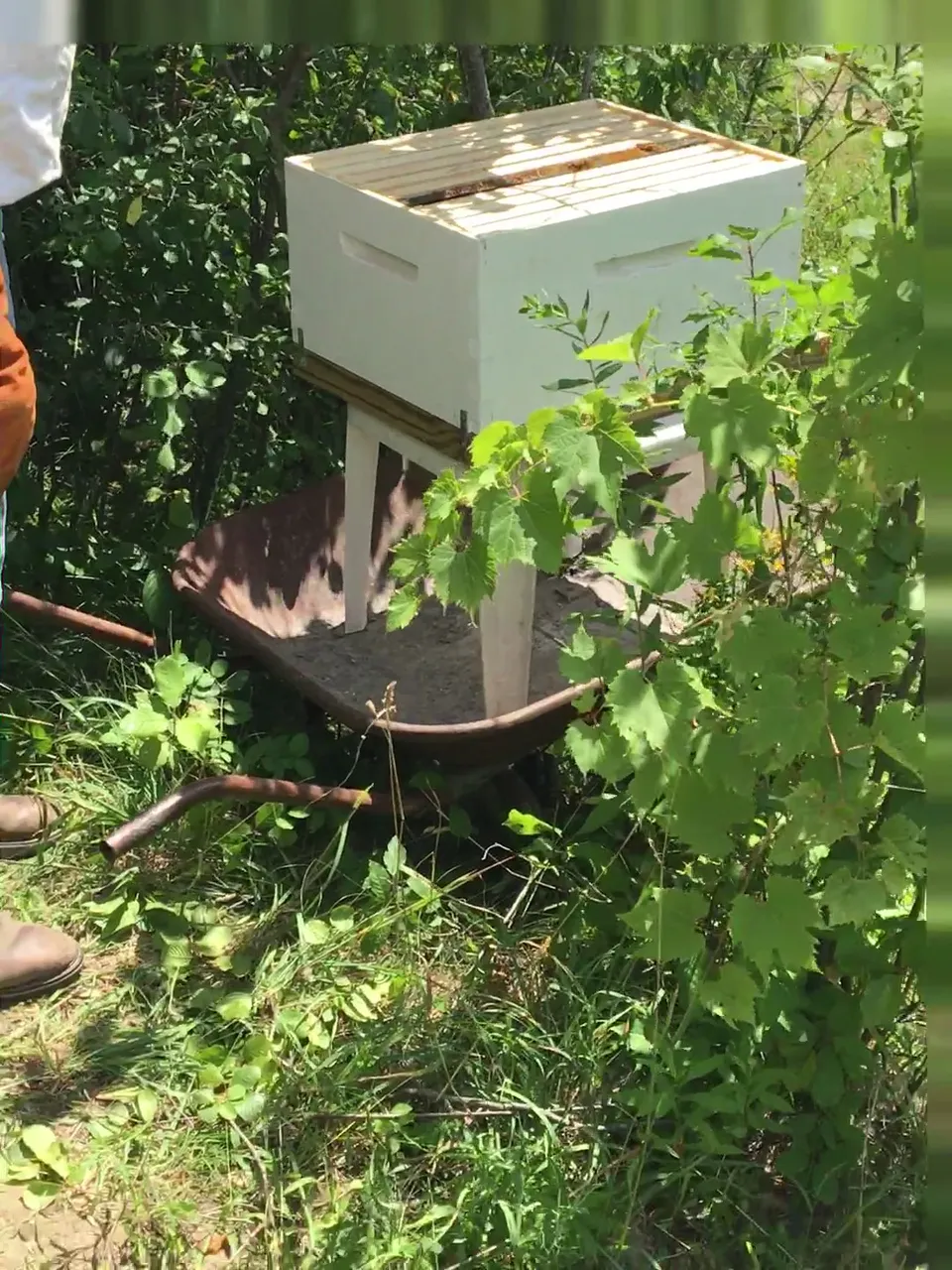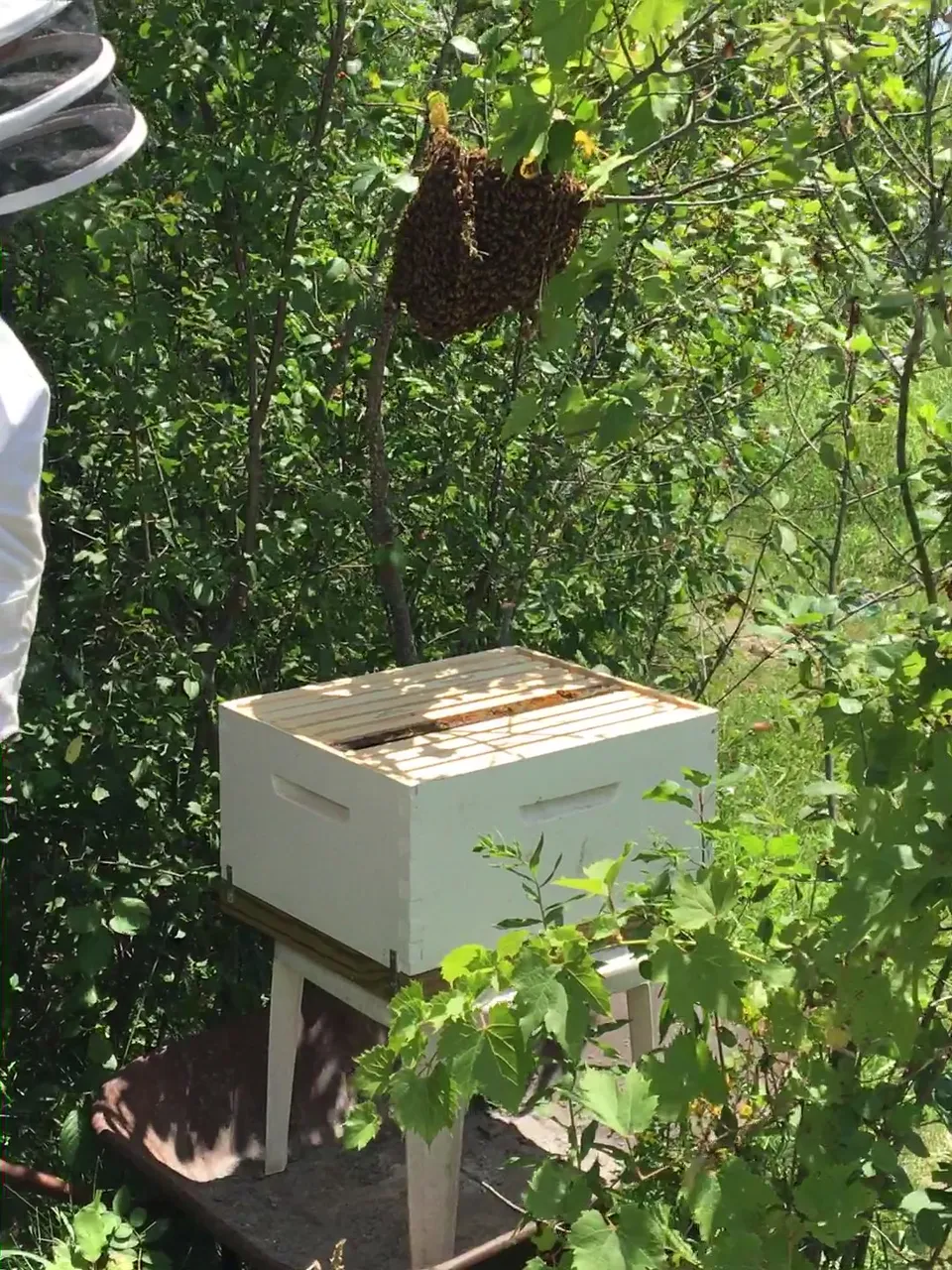 I went today on an expedition to go catch a swarm of bees. I work at a camp and we have neighbors that live on the same lake that we work at and one of these neighbors heard about our burgeoning bee program. They have been having a hard time getting to their swimming spot on the lake because they have a giant swarm of bees right on their path on the way to the water. The day after I hear about this, I head out to investigate with my friend and mentor, Dan. We brought out all our equipment and readied ourselves for some possibly agitated bees. The neighbor told us that the bees had been in the swarm for a bit over two weeks. Two weeks is an awful long time for a swarm to hang out as the bees only swarm for a few hours or at most a few days before heading to a new found and closed in home. We arrive to find a giant open air part swarm part hive. This is quite unique in that the bees were actually making their swarm spot into a hive right there in the open. The colony would be doomed to be felled at the first big storm that would thrash their hive and end their lives. This would be a lost colony of bees unless we can help them into a new, protected home.
I went today on an expedition to go catch a swarm of bees. I work at a camp and we have neighbors that live on the same lake that we work at and one of these neighbors heard about our burgeoning bee program. They have been having a hard time getting to their swimming spot on the lake because they have a giant swarm of bees right on their path on the way to the water. The day after I hear about this, I head out to investigate with my friend and mentor, Dan. We brought out all our equipment and readied ourselves for some possibly agitated bees. The neighbor told us that the bees had been in the swarm for a bit over two weeks. Two weeks is an awful long time for a swarm to hang out as the bees only swarm for a few hours or at most a few days before heading to a new found and closed in home. We arrive to find a giant open air part swarm part hive. This is quite unique in that the bees were actually making their swarm spot into a hive right there in the open. The colony would be doomed to be felled at the first big storm that would thrash their hive and end their lives. This would be a lost colony of bees unless we can help them into a new, protected home.
The first thing that Dan and I do is clear out the section under and around the hive so that there is a nice working area. Once a lot of the foliage is clear we can get a much better look at the hive. The next thing we do is rig up the hive box under the hive by using a cinder block, wheelbarrow, small plastic table, and on top of those things goes the hive box. Now we are all set up to drop the swarm into the box. One possible complication is that this swarm may act more like a hive depending on if the queen actually started laying eggs into the comb. If this is the case we will have to go about this by cutting out the brood comb and placing it in the box. This process will go much smoother if there is no brood and there is only one way to find out!


Watching the bees fall onto the hive box is mesmerizing, you can hear their confused buzz and watch thousands instantly take to the air and fly around the top of the main cluster as they try to figure out what to do next or check for danger. The hope is that the queen falls onto the box and then crawls towards the bottom of the hive box where her attendants will follow her. If the queen is still up on the top cluster, the bees will all form up around her again, if she is in the box, the bees will eventually all follow her to the box. To make the hive box look appetizing to the queen, we placed some brood comb into the box. The worker bees will repair the brood comb and the queen will lay into their cells if the home is found acceptable. To make sure the queen gets into the new home, we shake the remaining cluster before they are all settled. At this point, the odds are that the queen is on or in the box…only time will truly tell.
After the swarm has mostly settled into the new hive box, we brush the bees off of various pieces of the old comb and branch that used to be their home and take those pieces away so they do not stay attracted to them. Now we put the top on the box so that there is only one way in or out and that is through the front entrance. All the bees should eventually be finding the scent of their queen through the front entrance and enter through it. An entrance size reducer is introduced in order to create a smaller, tighter entrance where the queen pheromone should be more concentrated. The large cloud of bees above the hive should steadily be entering the new front entrance and making it their new home.
Something is weird about this swarm/hive. There is a small clump of bees that is clustered around a tiny tree stump that will not join with the much larger contingent in the box. No matter how we try to coax the bees they will not join the rest of the group. At this point, we will take a break until evening, when hopefully that small cluster will join the larger group.
Dan and I come back around 8:30 as the sun is starting to set. We approach the hive and see that the majority of bees are in the hive and there is a stream of bees entering the hive as the field worker bees are finishing their tasks for the day and coming to their new home. Dan is a little bit distressed to see that there is still a smaller group of clustered bees on that stump and does all he can to coax them to get into the new hive, which they resist over and over again. At this point Dan hypothesizes that there may be a second queen and that this small clump is loyal to her and we may have to capture a second, much smaller swarm. As dusk hits, the activity in the hive dies down to almost zero and we stuff the front entrance to the box and lift the box into the wheel barrow. After a slow and careful trip down the path, doing as little jostling as possible, we load the hive box with bees into Dan’s truck and slowly transport it to camp where its final home will be. This is my first swarm capture.
Until next time Steemians.
-Curt Ross
All pictures and video are my own.